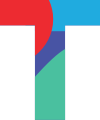Sustainable Development Goals and Indicators
Our inspiration for a ’Changed Society’
Can we create a world where every person can live in peace and dignity? A world that ensures a healthy and prosperous life for all? A global community that preserves natural resources for our future generations?
The solution to these questions is embedded in the guiding principle of sustainable development. To build our utopic world, we must join the global community and embrace tomorrow in today’s resolutions and we must act now.
As the former Secretary-General of the United Nations Ban Ki-moon puts it – “There is no Plan B because we do not have a Planet B.”
The gaps and shortcomings of the Millenium Development Goals’ movement have shed light on the importance of international coordination and collaboration for the success of SDGs. Moreover, the global community has realised the indispensable role of ‘The global indicator framework,’ which is essential for measuring and reporting the progress and failures of our interventions towards our SDG goals.
The Inter-agency and Expert Group on SDG indicators (IAEG – SDG) have developed a global indicator framework of 232+ indicators to monitor the 17 goals and 169 associated targets.
The Inter-agency and Expert Group on SDG indicators (IAEG – SDG) have developed a global indicator framework of 232+ indicators to monitor the 17 goals and 169 associated targets.
What is the global indicator framework?
The Global Indicator Framework highlights the interconnected and ambitious aspirations for the continued development of nations and societies.
The major role of the framework is to enable nations and the global community to gather relevant demographics and statistical data to measure, manage and monitor progress on economic, social and environmental sustainability. The countries and stakeholders can thus make informed decisions and on-going improvements to contribute towards achieving the SDGs.
SDG actors all around the world, including individuals, governments, institutions, organizations, universities, businesses, CSR departments or foundations, regardless of their size and purpose can work on multiple SDG goals at the same time. They may then choose the corresponding indicators that are best suited to the scope of their work or tailor the indicators to specific challenges and opportunities in their communities, to track their own progress towards sustainable development and contribute to the national level data.
According to the IAEG – SDGs, Indicators must be disaggregated, where relevant, by income, sex, age, race, ethnicity, migratory status, disability and geographic location, or other characteristics, in accordance with the Fundamental Principles of Official Statistics. The SDG indicators are divided into three tiers based on their level of methodological development and the availability of data for each indicator. The tier classifications for indicators keep changing as methodologies are developed and data availability increases.
Tracking SDG indicators
The SDG indicators must be tracked at a local level and reported periodically at the national and ultimately at the global level. Meaning, each local actor must mobilize, analyze, and communicate data on progress towards achieving its objectives on a regular basis. But the question is – how and to whom?
Different international agencies working across the globe, including the World Bank, UN organisations and other INGOs have been assigned as ‘custodians’ of the SDG targets. On the other hand, national governments are the sources of official statistics for their respective country. These international agencies work with National Statistical Offices (NSO) and relevant ministries to develop methodologies for indicators to collect relevant data and measure progress on the SDGs and facilitate reporting at a global level. The custodian agencies share the data provided by the NSOs to the global community only after quality assurance and plausibility checks are carried out. Data collection at the local level is particularly important as the global agenda 2030 seeks to “leave no one behind”.
Reporting SDG indicators
Many countries have national reporting platforms established for the SDGs and some even collaborate with other countries and report their respective SDG progress through a common platform. In case a country lacks an SDG platform or there are no other well-established data reporting mechanisms, then the NSO and the custodian agency determine an alternative data flow model. Many countries without the reporting platforms may also choose to declare their regional database as the primary source for custodian agencies to retrieve the country data.
After data is gathered on the national level and reported to the global community, The UN Secretary General produces an annual report, along with a special ‘SDGs Report’ that provide the official and overall assessment of global progress on the SDGs.
The global and the country-level progress towards each of the 17 SDG is also recorded in the form of interactive data visualization, dashboards and trackers on various portals, including those from the UN organisations and other civil society organisations. These portals track and report on goals and indicators that are relevant to their scope of work. Additionally, there is an SDG tracker launched in 2018 by Our World in Data that brings together data from many portals and additional sources.
Resources on these platforms are usually kept up-to-date with all of the latest data across all of the 17 Goals from around the world. They provide transparency around national and global metadata, containing information about the way data is categorized and how and when the data was created. These assessments also rank countries according to their performance on the SDGs and highlight their success and shortcomings, to evoke dialogues on the national and global levels on how the countries can improve on SDG tracking and reporting. These platforms and reports give us a glimpse of where we are now, and how far we have to go by 2030.



